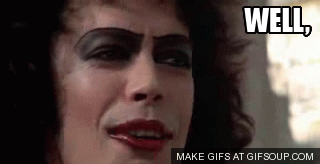- This post is part of a on-going series called “Being a Professional Manga Artist in the West“. The first post is here.
- Buy my short story collection from Bento Comic’s Smashwords storefront @ US$4.99.
Part 4b: Dean Koontz and the ‘Odd Thomas’ series (2007 – 2010)
Working with Dean was a real honour, and also a great learning experience. We did three graphic novel prequels to his ‘Odd Thomas’ series, one of which was co-written, the other two where I worked as an illustrator to scripts written by comic writers. I must say that while Dean was very nice and very easy to work with, he and I didn’t gel together as writers, and I felt much more comfortable working from scripts by other people.
The ‘Odd Thomas’ books gave me an opportunity to work with other writers, and to adapt a comic script into manga format. It was the first time I’ve had the opportunity to do this, and it was eye-opening – not just of the process, but in the way that comic book writers differed from each other. I worked with Fred and Landry and they were both great, but I must give praise to Fred Van Lente, who apart from being a very visual writer, is also quite talented. I learned a lot from Fred.
Anyway, I got to improve my drawing and get paid for it, and I also took up another illustration job during that time. In 2009, I worked with Steve Deger from Fairview Press, providing art for a ‘Book of Quotations’ he was publishing. I must say that this was the best-paying job I’ve ever had, and it was amazing for that very reason. If you see Steve, please shake his, because not only did he give very good pay, but he was also utterly professional in my experience.

That same year, I also worked with Hachette imprint Yen Press, drawing an original short story for them called ‘Forget-Me-Not.’ It was the first time in years (possibly ever) that I was able to draw a short story that I’d actually pitched, as opposed to drawing ‘on spec’ or working as an illustrator. The story was about a ‘Scent Merchant’ (read it here: http://www.queeniechan.com/manga/forget_me_not/1/), and it was published as part of their Yen Plus anthology in July 2009.
Yen Plus was Yen Press’ attempt to copy the anthology format of the Japanese manga market, and seeing the bulk of their books were manga, this seemed a wise move. Unfortunately, the magazine market was dying, and with the rise of the twin spectres of digital publishing and piracy it was just too pricey to keep Yen Plus as a print magazine. Yen Plus eventually went to digital subscription format in 2010, but finally shuttered their doors in December 2013. Along the way they had several important innovations, such as same-day release for all worldwide regions of their titles, so it was a good run. I still have my copy of the July 2009 issue of Yen Plus, which I treasure.
*****
Next Monday, I’ll be back to talk about more changes that happened in the industry, during the 3-4 years I spent working as an illustrator. After that, I’ll go into what happened in 2010.



